For someone who does a lot with her hands, and maybe because I do a lot with my hands, I have had a fair few injuries to them. One broken finger, several lots of stitches, many nasty cuts, the top sliced off one while preparing a chicken breast and, most recently, a sewing machine needle through a finger tip - in one side, out the other, had to call for tweezers to extract it - and an ironing burn.
[‘La Repasseuse’ (c1908) Louis Valtat - I like this, the absorption, the skill, the hands (no burns)]
The last is a recurring injury because I like a very hot iron and lots of steam (Tom used to love the steam action and brandished the iron like a hissing weapon). However, I can never decide if I think ironing is hateful or actually quite enjoyable.
It probably depends on what you are ironing and why. I have never forgotten being on a Bakerloo train when I was a London commuter, and listening to two woman discussing the problems of ironing the frills on pillowcases. Firstly, the idea of ironing a pillowcase had never crossed my mind and secondly, I wondered why, if you did want to iron pillowcases but found the frills tricky, you just didn’t buy ones without them. I’d be like Sylvia Plath in her poem ‘The Babysitters’ (1961), bemoaning the burns I’d inevitably receive:
Nights, I wrote in my diary spitefully, my fingers red
With triangular scorch marks from ironing tiny ruchings and puffed sleeves.
I have spent my life ironing as little as possible. School shirts were shaken and quickly hung up to dry, Simon ironed his own, and I can go virtually a whole winter without ironing because I favour jumpers. It’s only in summer that I tackle cotton and linen items, and even then it’s only when I’m running out of things to wear.
[demonstration of how to iron a shirt (1911), with sleeve ironing board]
But I do like ironing when dressmaking and quilting. I’m very happy listening to the radio while pressing tops and backs and lengths of washed fabric, and I am always amazed at how much you can rectify and improve with an iron and steam when making clothes. I’ve also recently discovered the usefulness of a tailor’s ham for curves and darts, and a tailor’s clapper for bulky seams - I also like the traditional names - and who knew there was such a thing as a sleeve ironing board? I bet those women on the Tube did, but I didn’t until a couple of weeks ago.
[a naked woman does ironing naked (1887), Eadweard Muybridge]
One thing I am under no illusion about is the potential glamour or domestic bliss of ironing. Degas was fascinated by repasseuses and does capture the drudgery of working in a steamy laundry, but it’s amazing how many other artists, illustrators, and advertising agencies have depicted women with dainty little irons or looking delighted to be ironing with the latest ironing board. And there are quite a few mildly titillating images of half-naked women ironing in an alluring way, not to mention Eadweard Muybridge’s study in motion above. Tbh, it’s not a chore I associate with a come-hither pose. Never mind the potential for burning more than your fingers.
[ironing on Rivelin Needle near Sheffield, at the peak of the extreme ironing craze]
It’s all a little too close to the sport of extreme ironing, but in your own home.
[Branded Irons (2000) by Willie Cole]
It’s not only the issue of burning body parts that’s a problem, it’s also the scorching and marking and sticky, melted messes on clothes and irons.
[Domestic ID IV(1992) by Willie Cole]
It never occurred to me that I could make patterns deliberately with a hot iron, although I have created a few unintentionally. These iron prints, which look a little like block prints on textiles using natural dyes, are on plywood. They are by Willie Cole whose mother and grandmother were housekeepers and gave him their broken irons to mend. At one point, he had fifteen to twenty in his studio but because he was saw himself as a painter he threw them away, and it was only later that he realised their potential for scorching and printing.
[‘Beauties’ by Willie Cole]
These are his full-scale prints made from crushed and hammered ironing boards; he’s got a whole back catalogue of thirty years of iron and ironing motifs which evoke “everything from African masks to slave ship diagrams to the routines of domestic servitude”. Interestingly, I’ve yet to find a photo of him actually ironing.
[1963]
On the other hand, even in the early days of The Beatles’ success, it didn’t do Paul McCartney’s Liverpudlian boy-next-door image any damage to be seen ironing.
And Margaret Thatcher was once happy to style herself as the Ironing Lady before she became the Iron Lady.
[Look Back in Anger, 1956]
Both media images would have been unthinkable just a few years before. Although millions of people had ironing boards in their houses, they were like milk bottles and it was not the done thing to have them out on display. John Osborne’s Look Back in Anger is seen as the turning point. The premiere in 1956 shocked critics and audiences with scenes of ironing; legend has it that there were gasps at the sight of an ironing board on stage. (It also tells you a great deal about who went to the theatre in those days.) Maybe this is also when the pressure to iron eg your frilly pillowcases began to lessen as women moved away from the ironing board, helped by the advent of drip-dry shirts, nylon sheets, and Crimplene. These fabrics make me shudder, but they were a means to an end of ironing.
The ironing board is then free to used in different ways. I like the Christmas dinner scene in Ted Lasso when the football players turn up unexpectedly at the Higgins’ house, and the ironing board, together with a small pool table, becomes an extension of the dining table. Or, as many during Covid discovered, it could be a stand-up desk, although I just know I’d lean too hard on it and collapse it. An interesting inversion of this is Marcel Duchamp’s concept of a ‘reciprocal ready-made’; in 1959 he suggested using a Rembrandt as an ironing board. Nice way to further shock the Look Back in Anger audience. (Daniel Spoerri made a composition using the idea.)
I have come up with three solutions to my anti-ironing sentiment.
The first is to keep the ironing board up and next to the sewing machine (but then I also like to leave milk bottles on the table). Alternatively, I’d like to have a fold-down ironing board like the one that Margarete Schütte-Lihotzky incorporated into her hugely influential ‘Frankfurt’ kitchen design which was used for a social housing project in Frankfurt in the 1920s. This one is in the National Museum in Oslo.
The second is to channel Patti Smith, and embrace what fashion writers would describe as a crinkled/wrinkled/ crushed/crumpled - but never creased - look. Surprisingly easy.
[silk Delphos gown designed by Fortuny c 1907]
The third is to wear clothes made from fabrics which must not/cannot be ironed. The least practical option as a) I am the last person to wear Lycra or Spandex anyway and b) Fortuny and Issey Miyake-style pleats are beautiful but beyond the pale, price-wise.
So it’s cottons, linens, and wools for me, and even though I dislike chore ironing, I still quite like creative ironing. I even iron my paper dressmaking patterns. This always reminds me of the opening scene of the The Camomile Lawn in which Helena is ironing Uncle Richard’s copy of The Times. This came as a shock to me, never having had a submissive wife or a manservant like the brilliant Bunter who does the same thing for Lord Peter Wimsey. With ironing, though, as with most things, there’s a limit.
Happy Sunday!



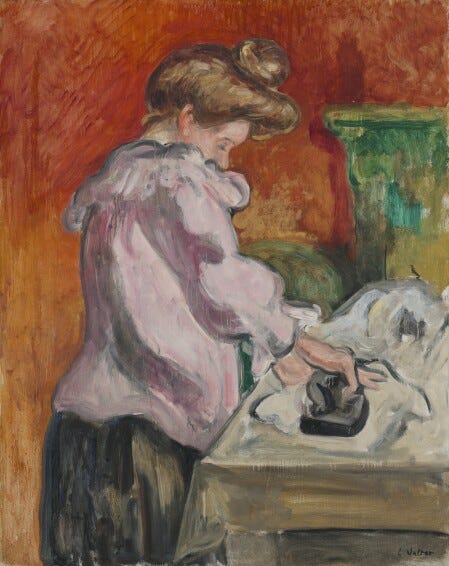
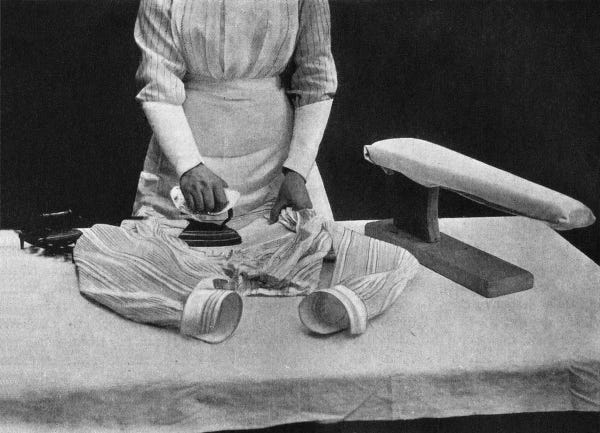
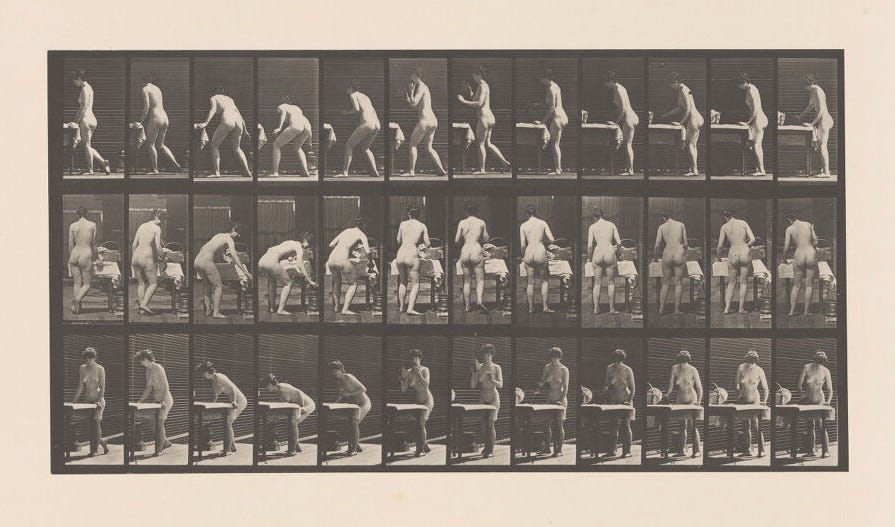
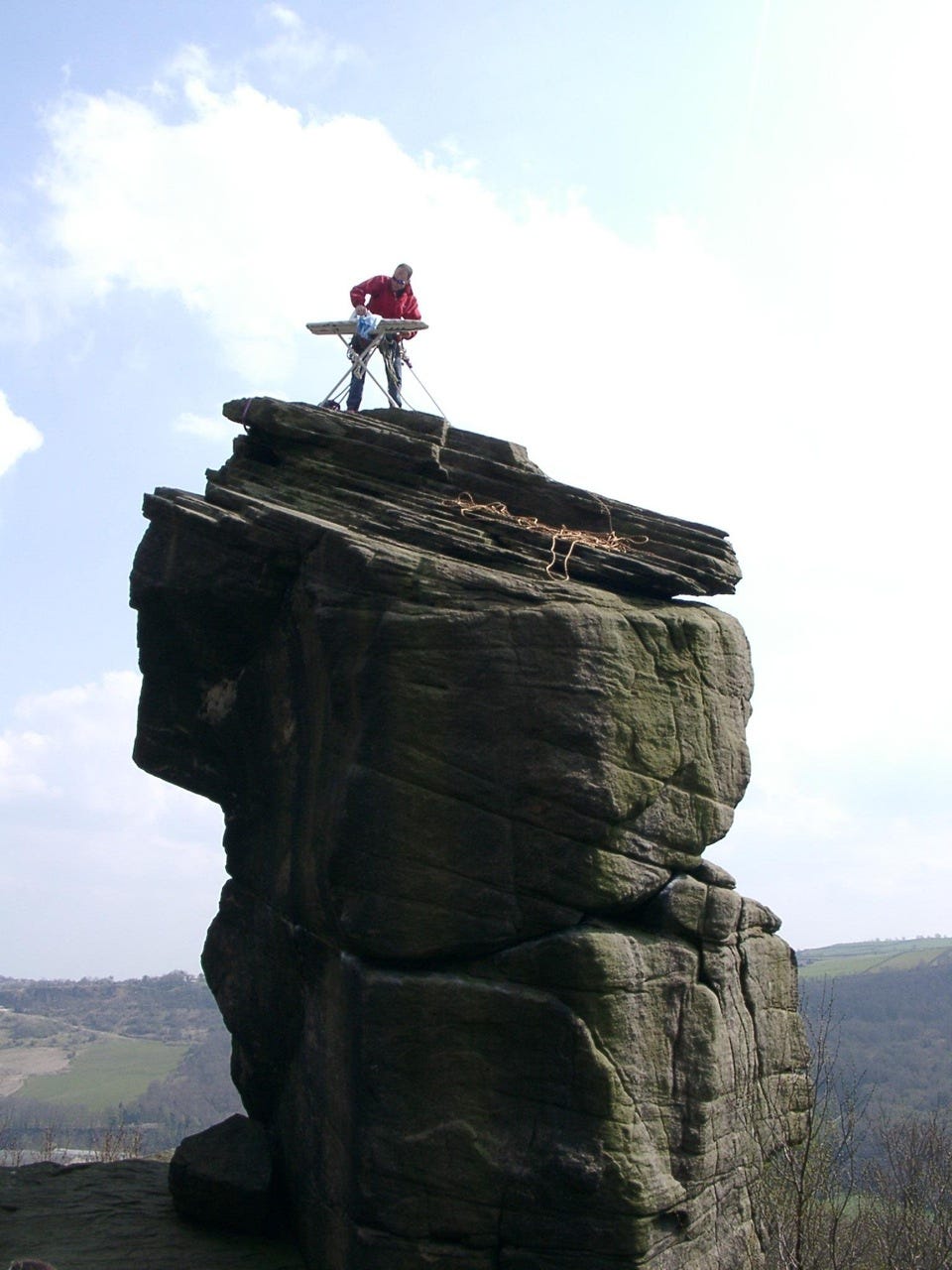


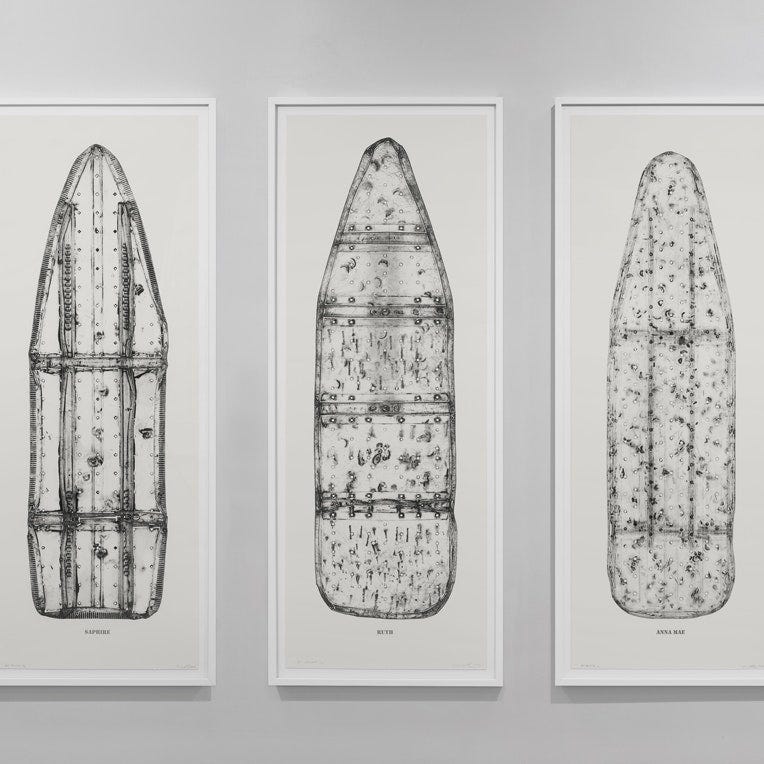
![Paul McCartney Ironing. [1963 - 1964?] : r/OldSchoolCool Paul McCartney Ironing. [1963 - 1964?] : r/OldSchoolCool](https://substackcdn.com/image/fetch/$s_!avV6!,w_1456,c_limit,f_auto,q_auto:good,fl_progressive:steep/https%3A%2F%2Fsubstack-post-media.s3.amazonaws.com%2Fpublic%2Fimages%2F471f1681-cfd3-41e3-963f-662b759cd89a_640x630.jpeg)

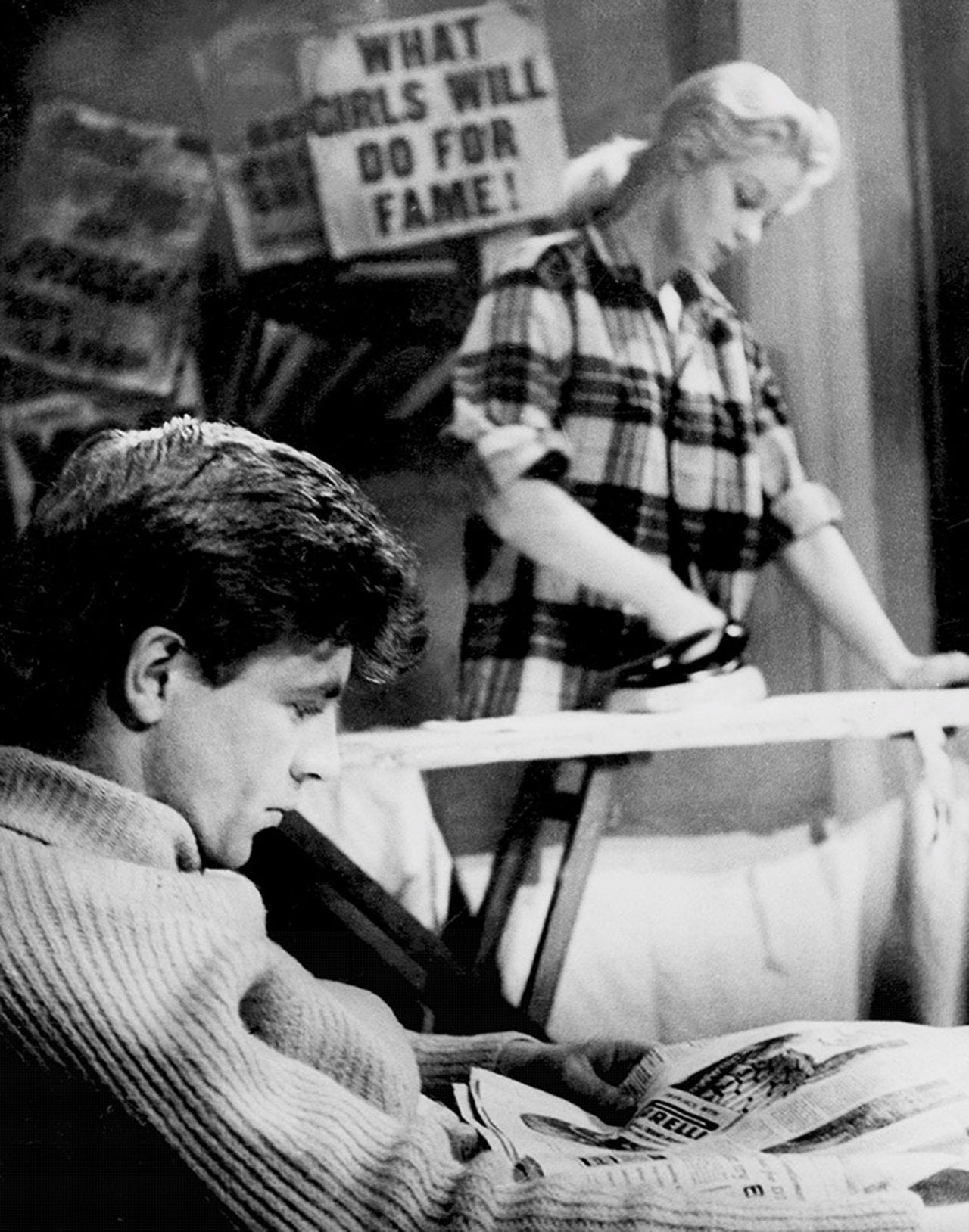
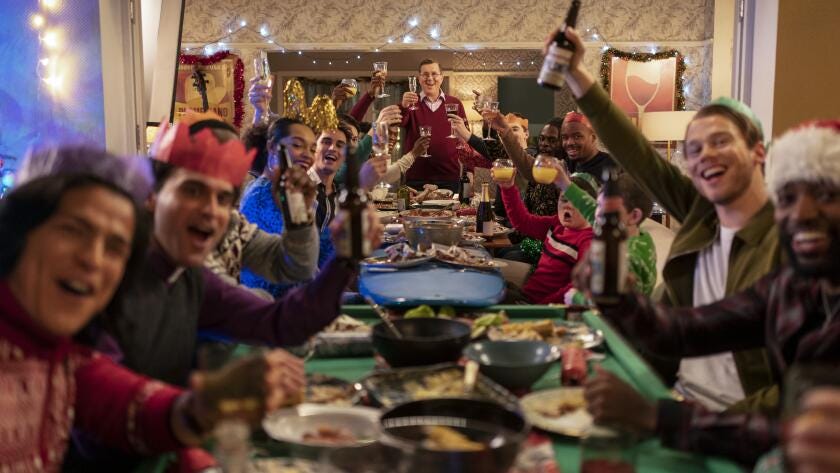
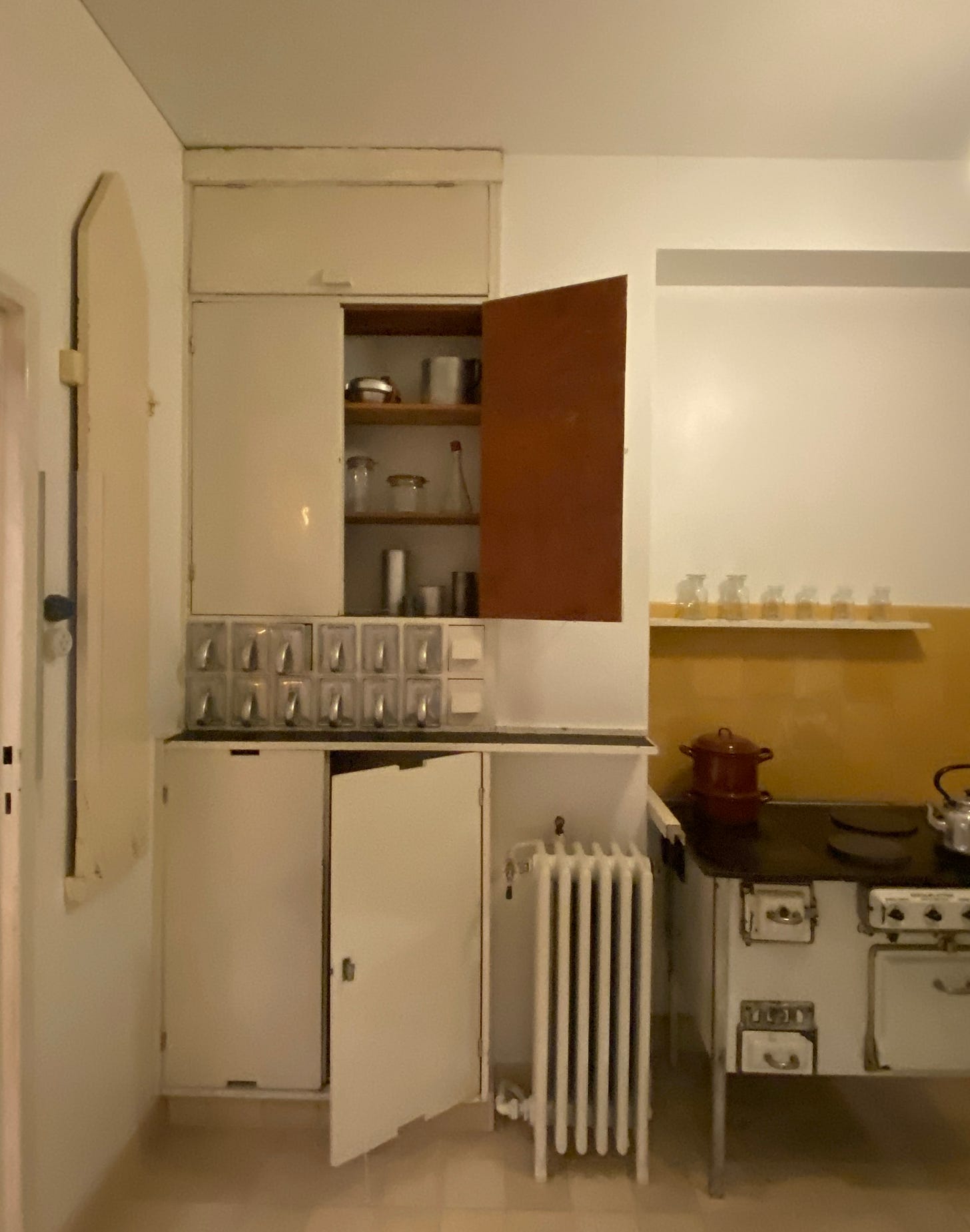
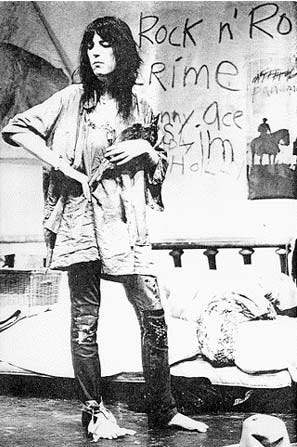

But what about bed linen? I don’t have frilly pillow cases but I do love slipping into a bed with nicely ironed linen. Listening to podcasts and ironing is bliss now I’m retired and have time.
I come from a family of assiduous ironers. My Mum even ironed tea towels and socks - so that they lay neatly in the drawer. I have passed this down to my son. Since cubs and the ironing badge he has been a demon ironer andnow he is living here at home with us again whilst saving for a house, he does all the ironing and I caught him pressing a towel the other day to make it look nice. What about goffering irons and irons for ruffs and other specialised irons that have disappeared altogether from usage but can still be found. I think they would make lovely marks and are, of course, what Victorians used for the edges of frilled pillowcases…….